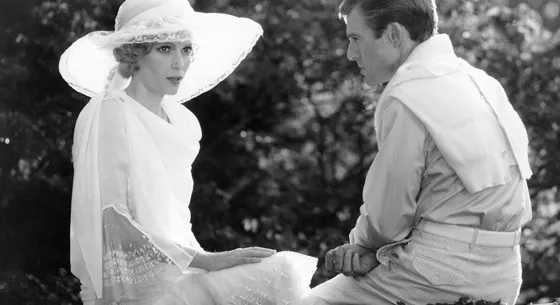Minnesota references found throughout "The Great Gatsby"
F. Scott Fitzgerald was born in Saint Paul on Sep 24, 1896 and lived at 481 Laurel Ave. His father was from Maryland, but his mother was a McQuillan, whose father was one of the early settlers in Saint Paul. Her father was a contemporary of the great railroad baron James J. Hill, and, like him, amassed a considerable fortune in the grocery and warehouse business.
Fitzgerald’s family moved often during his childhood, including stints in Buffalo and Syracuse, New York. But his base and family were firmly rooted in Minnesota. The Fitzgeralds were part of the upper crust of Cathedral Hill, and the extended family socialized regularly with the Summit Avenue crowd. Fitzgerald’s friends came from Saint Paul’s “best” families.
As a young adult, Fitzgerald first attended Saint Paul Academy, where his writing career began, with his first published stories appearing in the school’s newsletter. Later, he was sent to the Newman School in New Jersey and then Princeton for college. But Saint Paul remained home, and he returned regularly.
Shortly after Fitzgerald became a celebrity with the publication of This Side of Paradise in 1920, he married Zelda Sayre, an Alabama beauty he had met while in the Army. The couple returned to Saint Paul briefly, and their only child, daughter Scottie, was born in Saint Paul. They left Saint Paul in 1922, and never returned.
Fitzgerald’s profligate life began in Saint Paul, including infamous parties at the University Club, and getting thrown out of the White Bear Yacht Club. At Princeton, he was involved in the premier theater club, and as it was an all-male school, sometimes played female roles. A picture of Fitzgerald in drag appeared in the New York papers to promote one of the Princeton productions. Notoriously, on one of his returns to Minnesota, he crashed fraternity parties at the University of Minnesota in drag and was not “discovered” until the next day and reported in the local papers.
Saint Paul is infused in much of Fitzgerald’s work. Many of his most famous short stories, such as the Camel’s Back and The Night at the Fair, were directly derived from documented Minnesota experiences. The Great Gatsby is no exception. Fitzgerald began crafting his first outlines for Gatsby while living in White Bear Lake, and a number of scholars believe the lake was his original inspiration for the novel.
Indeed, the whole novel, through the eyes of narrator Nick Carraway, can be viewed as a Midwesterner’s attraction to and repulsion from the corruption of the East. And, of course, one can easily see much of Fitzgerald in Nick Carraway, and Zelda in Daisy. Minnesota details also run through The Great Gatsby. Local scholarship has found a record of Fitzgerald as a 14-year-old witnessing a pedestrian being hit and killed by a yellow roadster following a Saint Paul Saints game – paralleling directly one of the major dramatic moments in the book. At the end of the novel, Carraway references that Gatsby could have become a great man, like James J. Hill, and close Saint Paul friends of Fitzgerald, the Schulzes, Ordways and Herseys, are also mentioned. The last part of the novel concludes with the lyrical description of Nick’s return train ride to Minnesota. And, of course, a famous phrase from Daisy in the novel regarding her daughter, “…I hope she’ll be a beautiful little fool,” was a direct quote from Zelda after giving birth to Scottie in Saint Paul.
Although Fitzgerald left Minnesota at age 26 never to return, and that he received inspiration from many places and sources, Saint Paul and Minnesota were a deep well from which he drew his work. His foundational experiences and values were shaped here, and as his daughter referenced later on a visit to Saint Paul, Fitzgerald always considered Minnesota home.
Stu Wilson is president of Fitzgerald in Saint Paul, a nonprofit organization celebrating the history and work of the writer in his hometown.

